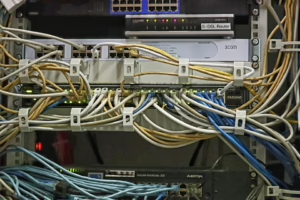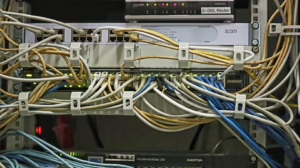Green Tech Innovations: Powering the Future of Renewable Energy
Introduction
The urgent need to address climate change and environmental degradation has ushered in an era of innovative technologies positively impacting renewable energy. Green tech innovations are revolutionizing the way we harness, store, and utilize energy. This article explores key advancements in green technology, highlighting their significance, challenges, and the promising future they offer.
1. The Necessity of Renewable Energy
1.1 Understanding Renewable Energy
Renewable energy refers to energy derived from natural processes that are replenished at a faster rate than consumed. This includes solar, wind, hydro, geothermal, and biomass energy. The shift from fossil fuels to renewable sources is crucial for reducing greenhouse gas emissions, minimizing pollution, and promoting sustainable development.
1.2 Climate Change & Environmental Impact
Climate change poses a severe threat to global ecosystems, economies, and human health. The burning of fossil fuels releases substantial amounts of carbon dioxide, contributing to global warming. With rising temperatures, extreme weather events, and sea-level rise, immediate action is essential to mitigate these effects.
1.3 Economic Incentives for Green Tech
Transitioning to renewable energy sources is not merely an environmental necessity; it also presents economic opportunities. As green technologies become more affordable and efficient, they stimulate job creation in various sectors, from manufacturing to installation and maintenance.
2. Key Innovations in Green Technology
Innovations in green technology have accelerated the transition toward renewable energy systems. Here are some of the key advancements that are shaping the future of energy.
2.1 Solar Energy Technologies
Solar energy has emerged as one of the most promising renewable energy sources. Technological advancements have markedly improved its efficiency and affordability.
-
Photovoltaic Cells: Modern photovoltaic (PV) cells have achieved unprecedented efficiency levels, with research into multi-junction cells and bifacial panels pushing the boundaries of solar energy capture. Some solar panels can now convert over 25% of sunlight into electricity, improving the energy yield significantly.
-
Solar Thermal Energy: Solar thermal technologies utilize mirrors or lenses to concentrate sunlight and generate steam for power generation. Innovations like concentrated solar power (CSP) systems enable energy storage, allowing for electricity generation even when the sun is not shining.
-
Building-integrated Photovoltaics (BIPV): These innovative products integrate solar panels into building materials, such as windows and roof tiles, making renewable energy generation more aesthetically pleasing and less intrusive.
2.2 Wind Energy Innovations
Wind energy is another vital source of renewable energy, and advancements are making it more efficient and reliable.
-
Offshore Wind Farms: Offshore wind technology has evolved, with turbines being installed in deeper waters where winds are stronger and more consistent. Innovative floating turbine designs allow for energy capture in previously inaccessible locations.
-
Vertical-axis Wind Turbines (VAWTs): Unlike traditional horizontal-axis wind turbines, VAWTs can capture wind from any direction and are generally quieter and more efficient in urban settings.
-
Smart Grids & Energy Storage: The integration of wind energy into smart grids allows for real-time monitoring and management of energy production and consumption. Innovations in energy storage, such as advanced battery technologies, are essential for stabilizing wind energy output.
2.3 Energy Storage Solutions
Energy storage remains one of the significant challenges in the renewable energy sector. However, technological advancements are enhancing storage capabilities.
-
Lithium-ion Batteries: These batteries dominate the current energy storage landscape, providing reliable storage for both electric vehicles and renewable energy systems. Research into increasing their lifespan, safety, and capacity continues to evolve.
-
Flow Batteries: Flow batteries offer a longer lifespan and are scalable. They store energy in liquid electrolyte solutions, making them suitable for large-scale energy storage, particularly for solar and wind energy.
-
Compressed Air Energy Storage (CAES): CAES systems store energy by compressing air in underground caverns. When energy demand spikes, the compressed air is released to power turbines and generate electricity.
2.4 Bioenergy Developments
Bioenergy has gained traction as a renewable energy source through innovations that make it more sustainable.
-
Advanced Biofuels: Innovations in biofuel production, such as second and third-generation biofuels made from non-food biomass, present a cleaner alternative to traditional fossil fuels.
-
Anaerobic Digestion: This process converts organic waste into biogas, which can be used for heating, electricity generation, or even as a vehicle fuel. It mitigates waste while producing energy.
2.5 Geothermal Energy Utilization
Geothermal energy harnesses heat stored beneath the Earth’s surface and has seen considerable advancements.
-
Enhanced Geothermal Systems (EGS): EGS technologies can create geothermal reservoirs in hot dry rock formations, expanding the potential for geothermal energy production far beyond traditional volcanic regions.
-
Ground Source Heat Pumps (GSHP): GSHP systems utilize the Earth’s stable subterranean temperatures for heating and cooling buildings, providing energy-efficient heating solutions across various climates.
3. The Role of Policy and Investment
The progress of green technology innovations is closely tied to government policies and financial investment strategies.
3.1 Government Incentives and Support
Government policies play a crucial role in promoting renewable energy adoption. Incentives like tax credits, subsidies, and renewable portfolio standards encourage investment and development of clean technologies.
3.2 Private Sector Investment
Increasingly, private sector investment is flowing into renewable technology development. Venture capital and corporate funding are essential for advancing research, development, and the commercialization of innovative green technologies.
3.3 International Cooperation
Climate change is a global concern; thus, international cooperation in green technology is vital. Agreements like the Paris Accord facilitate collaboration among nations to share research, technologies, and best practices focused on sustainable energy transitions.
4. Challenges Facing Green Tech Innovations
Despite remarkable progress, several challenges persist in the green technology sector.
4.1 Technological Limitations
Many innovative technologies are still in development phases and may require further research and investment to become commercially viable and widely adopted.
4.2 Infrastructure Challenges
Transitioning to renewable energy necessitates overhauling existing energy infrastructure. Developing countries, in particular, may face hurdles due to limited resources and aging infrastructure.
4.3 Public Acceptance and Awareness
Public perception of renewable energy technologies can hinder progress. Misconceptions about costs, efficacy, or environmental impacts need to be addressed through education and advocacy.
5. The Future of Green Technology
The future of green technology is bright, with ongoing innovations poised to reshape the global energy landscape.
5.1 Integration of Artificial Intelligence (AI)
AI can optimize the management of renewable energy systems by predicting energy demand, improving energy storage, and enhancing efficiency in operations and maintenance.
5.2 Decentralized Energy Systems
Decentralized energy systems, including microgrids and home energy systems, give consumers more control over their energy consumption and generation.
5.3 Sustainable Urban Development
Green technology is a key component of sustainable urban development. Smart cities that integrate renewable energy sources, intelligent transportation systems, and efficient waste management can minimize their environmental footprint.
Conclusion
Green tech innovations are not only crucial for combatting climate change but also offer considerable economic and social benefits. The continuous evolution of renewable energy technologies represents a path toward a sustainable and prosperous future. Moving forward, collaboration among governments, the private sector, and individuals will be essential to harnessing the full potential of green technology and ensuring a cleaner planet for future generations.
References
- [Modern Footnote Source]
- [Modern Footnote Source]
- [Modern Footnote Source]
- [Modern Footnote Source]
- [Modern Footnote Source]
This article can be expanded upon, elaborated, or modified in various sections according to specific interests within the realm of green tech innovations. Would you like to focus on any particular area or add more detailed statistics?


























Add Comment